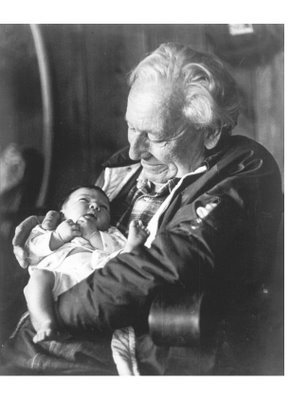Logical Learning Levels and Psychotherapy
Coaching does not teach, but helps to learn.Timothy Galvey
We can study, study study,Gregory Bateson
maybe study study study.
 Gregory Bateson is one of the most influential thinkers of our time (according to Fridtjof Kapra, “The Tao of Physics”), whose work combines knowledge from epistemology, cybernetics, anthropology, psychology, ecology. One of Bateson’s most fundamental concepts is the idea of logical levels of learning and communication.
Gregory Bateson is one of the most influential thinkers of our time (according to Fridtjof Kapra, “The Tao of Physics”), whose work combines knowledge from epistemology, cybernetics, anthropology, psychology, ecology. One of Bateson’s most fundamental concepts is the idea of logical levels of learning and communication.Its foundation lies in the theory of logical types of Bertrand Russell, which can be summarized as follows: all objects of thought are organized in a kind of hierarchy, the zero type of which includes individual objects (for example, a spoon). The first type includes sets of objects of the zero type (for example, spoons as a set); to the second, sets of sets of these objects (for example, “cutlery” as a set that combines spoons, forks, knives and other devices)
As applied to learning, the theory of logical types is as follows.
Learning levels
Zero level learning is a linear response to environmental change. For example, when a person "learned" to recognize by the battle of the clock that twelve o'clock comes. This happens in the simplest cases - laboratory training of animals, genetic determination, in simple electronic circuits, and so on.
(Bateson, incidentally, notes that as part of his definition, many very simple mechanical devices show at least the phenomenon of zero learning, so the question is not “can machines learn,” but “what level of training can this machine achieve ". The ability to achieve training at a certain level is directly related to the ability of the system (in the case of a person - a brain neurosubstrate) to form circuits with an appropriate level of recursion.)
Primary training -
Here Bateson introduces the concept of “context”, which determines the choice from different sets of responses:
As an example
Training III and psychotherapy
In Bateson's understanding, the effectiveness of psychotherapy is determined by the substitution of the premises obtained in
(There is also a close connection between the concept of “I” and the levels of learning, since the feeling and concept of “I” itself is to a large extent a product of training-II - accordingly, training-III should be associated with going beyond the boundaries of this concept, this concept and of this understanding: “The concept of“ I ”no longer functions as a central argument in the punctuation of experience.” This thesis also resonates with many descriptions of religious experience, where “personality” ceases to matter - and with the characteristics of the trance state repeatedly described in the literature I, where the boundaries of the "I" are modified and blurred.)
"
Learning Level III Experiment
Training and reinforcement at different levels occurs
But the “reinforcement” at
The classical experiment on reaching the level of
- the dolphin in the demonstration pool was used to show the public the mechanism of training or, in cybernetic terms, the mechanism of “operant conditioning”;
- when the dolphin showed a new action at a public demonstration, the trainer whistled and gave the dolphin fish;
- at the next performance, when the dolphin for about two-thirds of the time repeated the movement that gave the result last time, the trainer did not give him fish;
- when a new distinct movement appears, the trainer whistled and gave the dolphin fish;
- as the dolphin’s anxiety grew with each demonstration, the trainer deviated from the rules and began to give the dolphin “unearned fish” from time to time in order to maintain the context of relations and training.
The result of this sequence was that between the fourteenth and fifteenth sessions the dolphin seemed very excited, and when he appeared in the demonstration pool for the fifteenth time, he staged a long show that included eight distinctly distinct units of behavior, four of which were completely new,
From this experiment, an extremely important principle follows, common to psychotherapy, and to coaching, and to
UPD Summarizing, I will draw several conclusions and assumptions:
1. Life in general and learning in particular how a process can occur at different logical levels and these levels must be distinguished between each other so as not to confuse the bulldog with the rhinoceros and not fall into the trap of “double ligaments” - both in the outside world and in one’s own thinking .
2. The mixing of logical types is a very common thing both in thinking and in life - and it can be not only negative and paralyzing, but also contribute to creativity and exit (consciousness and practice) to a new level.
3. Psychotherapy and coaching are cybernetically sound and extremely useful practices to improve the quality of life in general and thinking in particular.
4. Structuring contexts is a way to organize a person’s perception in one way or another that is constantly happening in human life and interaction. A vigilant attitude towards this can serve both to improve the quality of life, and the emergence of fundamentally new ways of teaching and transmitting information - including in IT projects.
